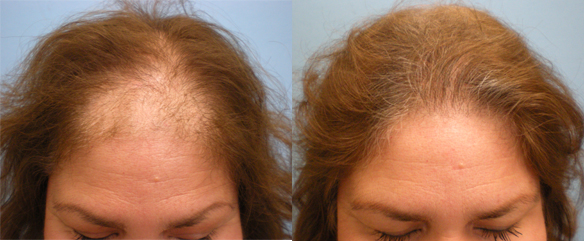Female-Pattern Hair Loss (FPB)
Female-pattern baldness is different than that of male pattern baldness. The hair thins all over the head, in a diffused manner but the frontal hairline does not regress. There may be a moderate loss of hair on the crown, but this rarely progresses to total or near baldness as it may in men.
Female-pattern baldness hair loss is permanent. The hair loss is usually mild to moderate. No treatment is required if the person is comfortable with her appearance. It can be treated with medication or hair restoration. Some women however lose hair in a pattern similar to men.
Failure to grow a new hair is closely linked with genetic predisposition, aging, and levels of endocrine hormones. Changes in the levels of the androgens can affect hair production. For example, after the hormonal changes of menopause, many women find that the hair on the head is thinned, while facial hair is coarser. Although new hair is not produced, the follicle remains alive, suggesting the possibility of new hair growth.
The United States Food and Drug Administration (FDA) approved some drugs to treat female-pattern baldness. It is minoxidil, used topically on the scalp. It may help hair to grow in 40% of the population, and in 90% it may slow the loss of hair. Hair loss recurs when its use is stopped.
Genetic hair loss and molt or increased hair shedding (chronic telogen effluvium), accounts for the majority of all hair loss in women. Women are more likely to thin diffusely from behind the front hairline to the crown. Unlike men who tend to lose a lot of hair in particular areas, like the temples and crown – Male pattern baldness.
Tags: after hair transplant, us hair restoration, woman hair restoration

